Rat vs Gopher: Their Differences, Traits And Behaviors
When it comes to pests, rats and gophers are two common culprits that can wreak havoc on homes and gardens. While they may seem similar at first glance, understanding the differences between these two creatures is essential for effective pest control.
Rats are notorious for their sharp teeth and ability to gnaw through almost anything. They are known carriers of diseases that can pose a risk to human health. Gophers, on the other hand, are smaller and prefer to tunnel underground, which can cause damage to lawns and gardens.
To effectively control rats and gophers, it’s important to understand their behavior and habitat. Rats are often found in urban areas, particularly near sources of food like garbage cans and compost piles. They are also skilled climbers and can easily access homes and buildings through gaps and holes in the roof or walls.
Gophers, on the other hand, prefer open grassy areas with well-drained soil. They’re also known for creating mounds of dirt on the surface of the ground. They are active throughout the day and can be heard making noises as they dig.
In this piece, we’ll dive deeper into the world of these pests to understand their traits and learn how to keep them at bay.
Comparison of Physical Characteristics Between Rat and Gopher
The untrained eye might confuse these two little rodents for one another. Yet there are significant distinctions between them.
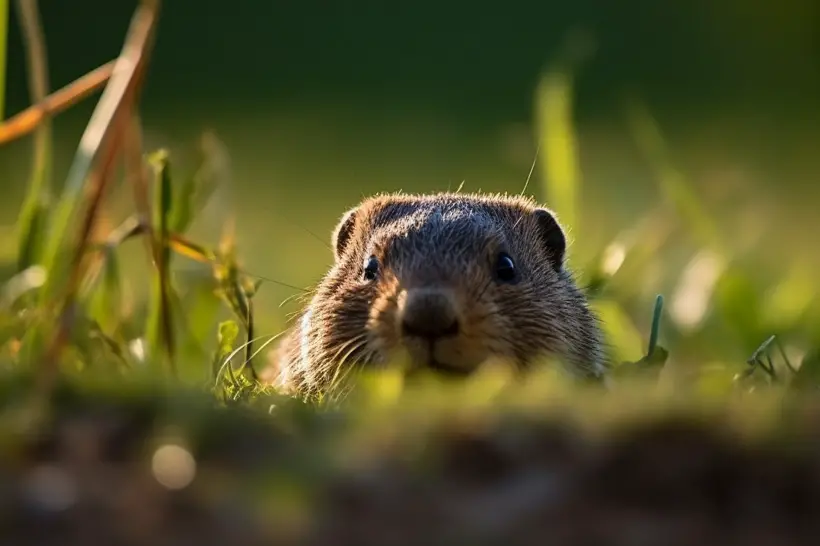
Size
Rats are generally larger than gophers, with an average length of 6 – 8 inches and a weight of 3.4 -8 ounces. They have a pointed snout, large ears, and a long, scaly tail.
Gophers, on the other hand, are usually around 6 to 8 inches long and weigh about 0.5 to 2.2 pounds.
Fur Color and Texture
Rats typically have coarse fur that ranges from brown to black. In contrast, gophers have softer fur that is brown or gray. The texture of rat fur is shorter and smoother, while gopher fur is longer and can vary in texture from smooth to wiry.
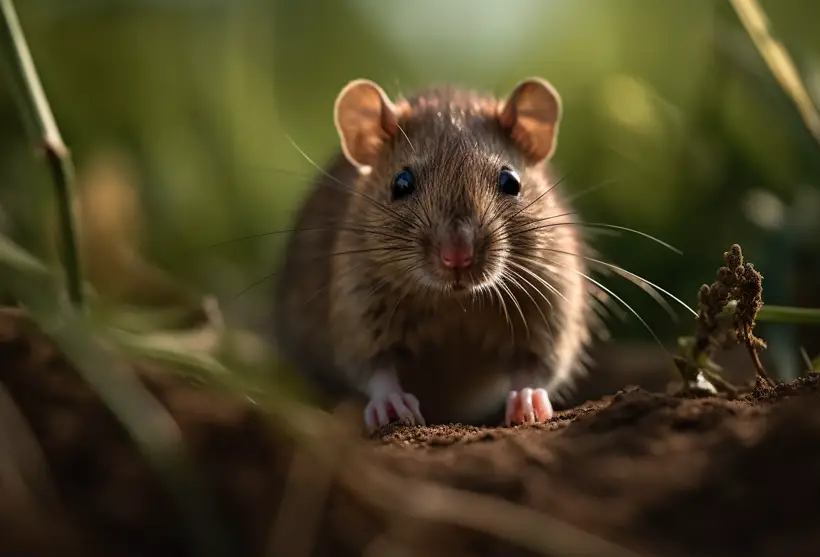
Tail Shape and Length
Rats have long, thin tails that are often hairless and scaly, the length is about 7-9 inches. While gophers have shorter, (1 to 2 inches long), bushier tails that are covered in fur.
Now if you come across a small rodent that is around a foot long, has short, sleek fur, and a long, thin tail, you are likely dealing with a rat. If, on the other hand, you come across a smaller rodent with longer, coarser fur and a shorter, bushier tail, you are likely dealing with a gopher.
Comparison of Gophers and Rats’ Behavior
Understanding the differences between rat and gopher behavior can be incredibly helpful in identifying and managing infestations. Here are notable behaviors that can aid their identification.
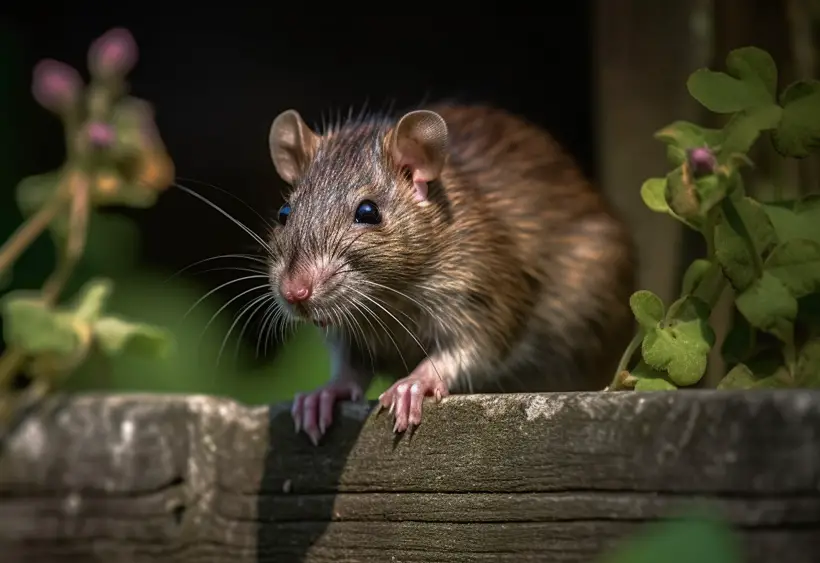
Habitat
Rats are adaptable animals that can live in a wide range of environments, including cities, forests, and agricultural fields. Rats prefer nesting in dark and isolated areas such as attics, basements, and wall voids.
Gophers, on the other hand, are burrowing animals that prefer open grassy areas or agricultural fields. It is because they need a place where they can dig tunnels and construct complex underground burrow systems.
Food preferences
Rats are omnivorous animals that eat fruits, grains, and vegetables. They also feed on small insects and animals.

Gophers, on the other hand, are herbivores that primarily feed on plant roots and tubers. They are known to eat up to 60% of their body weight in a single day
Social Behavior
Rats’ behavior depicts that they are social animals that live in groups or colonies. They are also known to communicate with each other through a variety of vocalizations and body language.
Gophers, on the other hand, are solitary animals that typically only come together to mate.
Activity Patterns
Rats are nocturnal animals and are most active at night. They are rarely seen during the day, making them harder to spot.
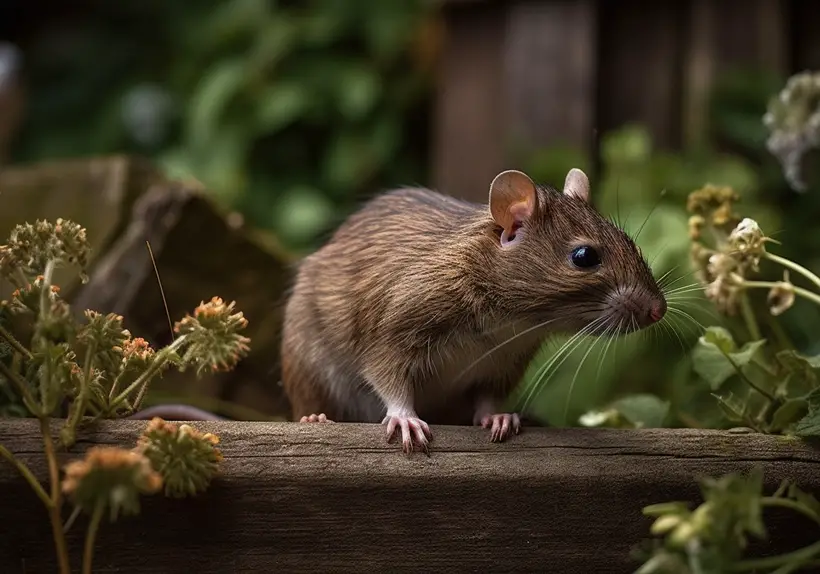
Gophers are diurnal and are active during the day. They can often be seen popping their heads out of their burrows or digging in the garden.
Burrowing Behaviour
Gophers are known for their extensive burrowing behavior. They create complex tunnel systems underground for feeding, nesting, and protection. Rats also burrow but typically create shallow burrows in gardens or underneath buildings
Gopher and Rat Infestation Timeline
Rat infestation and gopher infestation go through different stages before they become uncontrollable. Hence, let’s consider the rat and gopher infestation timeline.
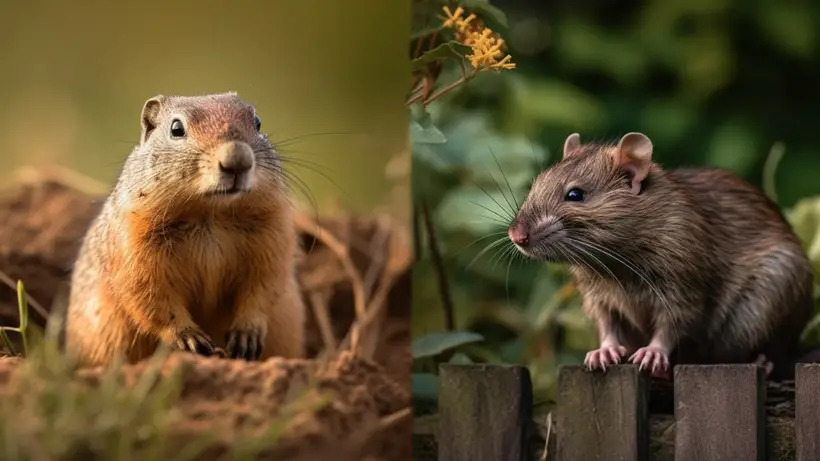
Stage 1: Initial Infestation
This is the early stage of a rat or gopher infestation and it often happens during the warmer months (summer periods). The rodents often search for food and water sources. You may notice only a few signs of activity. This can include seeing a few droppings or noticing small burrows or nests.
At this stage, the rodents are likely still exploring the area and establishing their territory. You can control this by sealing up entry points and eliminating food sources to prevent the pests from establishing themselves.
Stage 2: Established Infestation
As the infestation progresses, rodent activity increases. This can include hearing scratching or rustling noises in walls or ceilings and seeing more droppings or nests. Also, gopher mounds may start to appear more frequently and damage food containers.
At this stage, the rodents become bolder in their exploration and may venture into homes or other structures. This is a critical time to take action to prevent the infestation from spreading and causing further damage. Hence, trapping and baiting can be effective in reducing the population.
Stage 3: Advanced Infestation
The rodent population has reached a critical mass and is causing significant damage. You may notice an overwhelming amount of droppings, damage to wiring or insulation, and a strong odor of urine or feces.
At this stage, the rodents become more aggressive, causing extensive damage and posing a health risk to humans and animals. It’s necessary to enlist the help of a professional pest control service to remove the rodents or use natural pest repellants to prevent further damage.
Damage Caused by Rats and Gophers
Rats and gophers are damage causing rodents both in the home and on farmlands. Below are some damages they cause.
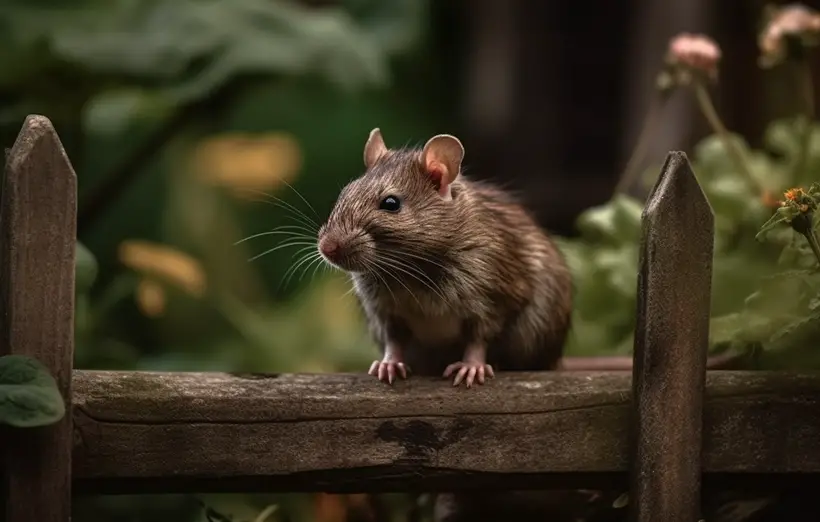
Damage to crops
Gophers and rats primarily feed on plant roots and tubers, which results in root damage and plant damage reducing crop yields. Additionally, burrowing and tunneling through the soil create air pockets that affect the soil quality
Food contamination
Rats and gophers can contaminate stored food products with their droppings and urine, making them unfit for human or animal consumption.
Garden damage
Gophers and rats are also considered garden pests. Gophers also have a voracious appetite for plants and can quickly destroy large portions of your lawn or garden. Rats also eat what humans eat and will sometimes cause damage to plants in the garden.
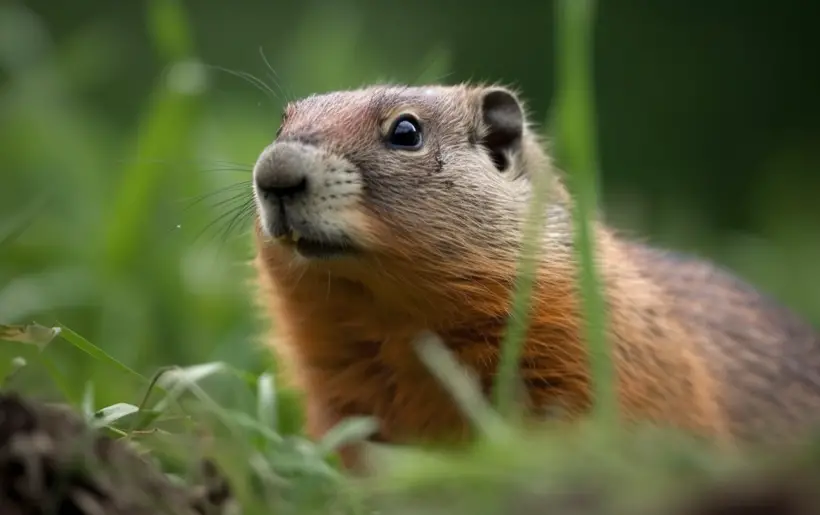
Property Damage
Rats are notorious for chewing through electrical wires and hoses, which can lead to electrical failures, fires, and other hazards. They can also chew through wood, plastic, and other building materials, causing structural damage to homes and buildings.
Gophers use soil erosion by digging tunnels, which can cause damage to landscaping and weaken the foundation of buildings.
Health Risk
Rats can transmit a variety of diseases, including leptospirosis, hantavirus, and salmonella, through their urine and droppings. These diseases can be transmitted through direct contact with rodents or through contact with contaminated surfaces and food products. Rats and gophers both carry fleas and ticks, which can bite humans and cause secondary infections.
Rat and Gopher Trapping and Removal Strategies
Trapping and removal methods are essential to effectively get rid of these rodents. Trapping methods vary depending on the behavior of the rodents and the infestation timeline.
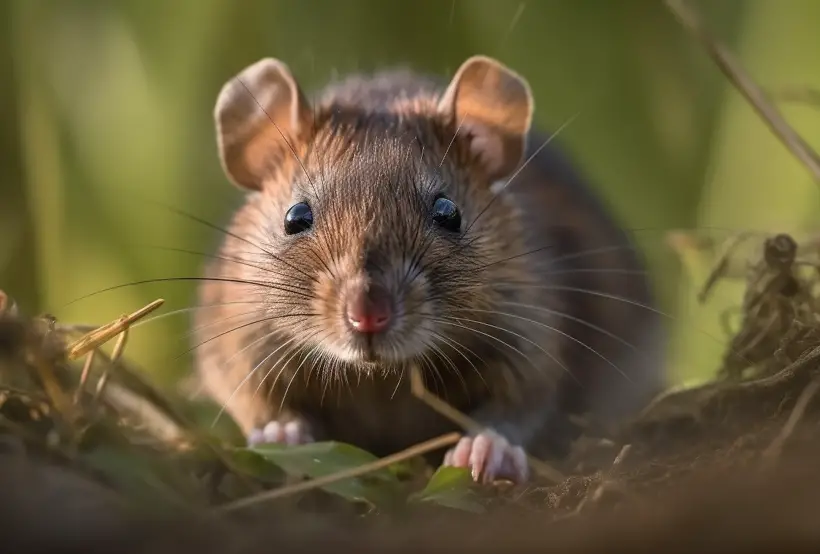
Here are some trapping and removal strategies for rats and gophers:
Snap Traps
Snap traps are one of the most commonly used rat and gopher traps. These traps work by quickly snapping shut when a rat or gopher triggers the trap. They can be set with bait to attract the rodent. The trap must be placed in the path of the rat or gopher for the best results.
Live Traps
Live traps are humane and effective traps that can be used to catch and release rats and gophers. These traps work by luring the rodents into a cage, where they are trapped. Once trapped, the rodent can be released into the wild far away from your property.
Glue Traps
Glue traps are sticky substances that rats and gophers get stuck to. These traps can be placed along the path of the rodent, where they will get stuck to the glue. Once stuck, the rodent will not be able to escape.
Bait Stations
Bait stations are a way to lure rats and gophers into a specific area where they can be trapped. These stations are typically a box that contains bait, which attracts rodents. Once the rodents enter the box, they can be trapped.
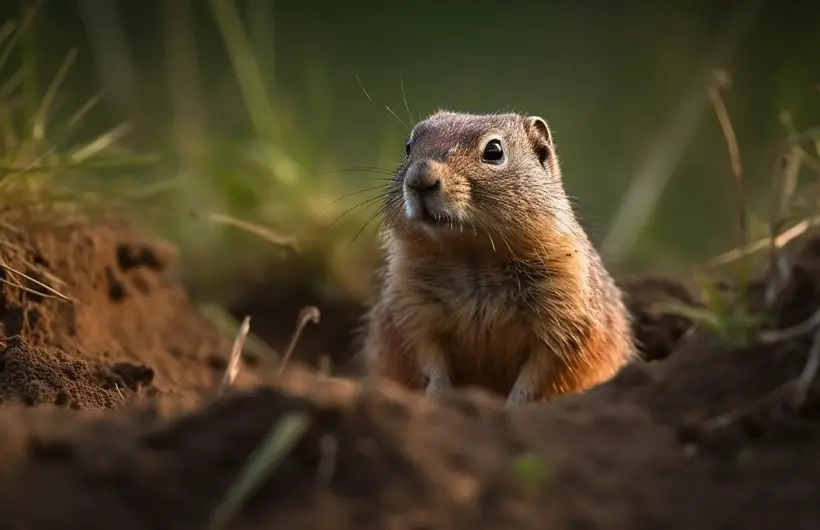
Ultrasonic Repellents
Ultrasonic repellents emit high-frequency sound waves that are unpleasant for rats and gophers. These devices can be used to deter rodents from entering your property. They are often used in combination with other traps to ensure the best results.
Burrow Fumigation
Burrow fumigation is a method of killing rats and gophers by filling their burrows with toxic gas. This method is effective for eliminating a large number of rodents quickly. However, it is important to ensure that all the rodents are removed from the area before the gas is released.
If you’re trying to figure out when to set traps or take other measures to control gophers, our article on when are gophers most active offers information on their typical behavior and habits. Additionally, if you’re trying to locate gopher holes to set traps, our article on how to find gopher holes provides tips on how to locate their underground burrows. And if you’re interested in learning more about gopher behavior and control, check out our article on when are gophers most active, and our piece on how to find gopher holes for tips on how to locate their burrows.FAQs
Here are some more questions and their answers to give you a further understanding of pest control.
1. What are some natural pest control methods for rats and gophers?
Planting strong-smelling herbs, such as mint and lavender, repel rodents. Fox or coyote urine or feces can repel rats and gophers. The high-frequency sound might also scare rats away.
2. How can I prevent a rat or gopher infestation?
Keep your home clean, store food appropriately, plug cracks and gaps, and manage your grass to avoid rat or gopher infestations. Install wire mesh or hardware cloth around your property to prevent rodents from digging underneath.
Conclusion
For effective pest control and wildlife management practices, gardeners must understand the distinctions between rats and gophers. Rats are nocturnal and social creatures that thrive in groups, whereas gophers are diurnal and solitary underground dwellers.
Rats and gophers can both cause property damage and pose health risks to humans. Rats are known to spread diseases like salmonella and Hantavirus, while gophers can cause damage to underground utility lines and irrigation systems.
Trapping and removal methods vary depending on rodent behavior and the timeline of the infestation. Snap traps work well for rats, but live traps work best for gophers.
Planting strong-smelling herbs and using predator urine or feces as natural pest control methods can also be effective in deterring these pests. It should be noted, however, that some natural pest control methods may not be as effective as chemical methods.
More research on rat and gopher behavior and natural pest control methods is required to develop more effective and sustainable pest management strategies.
Finally, understanding the distinct characteristics of rats and gophers will help in putting preventative measures in place. Ultimately, you can effectively manage their populations and reduce the damage they can cause.




